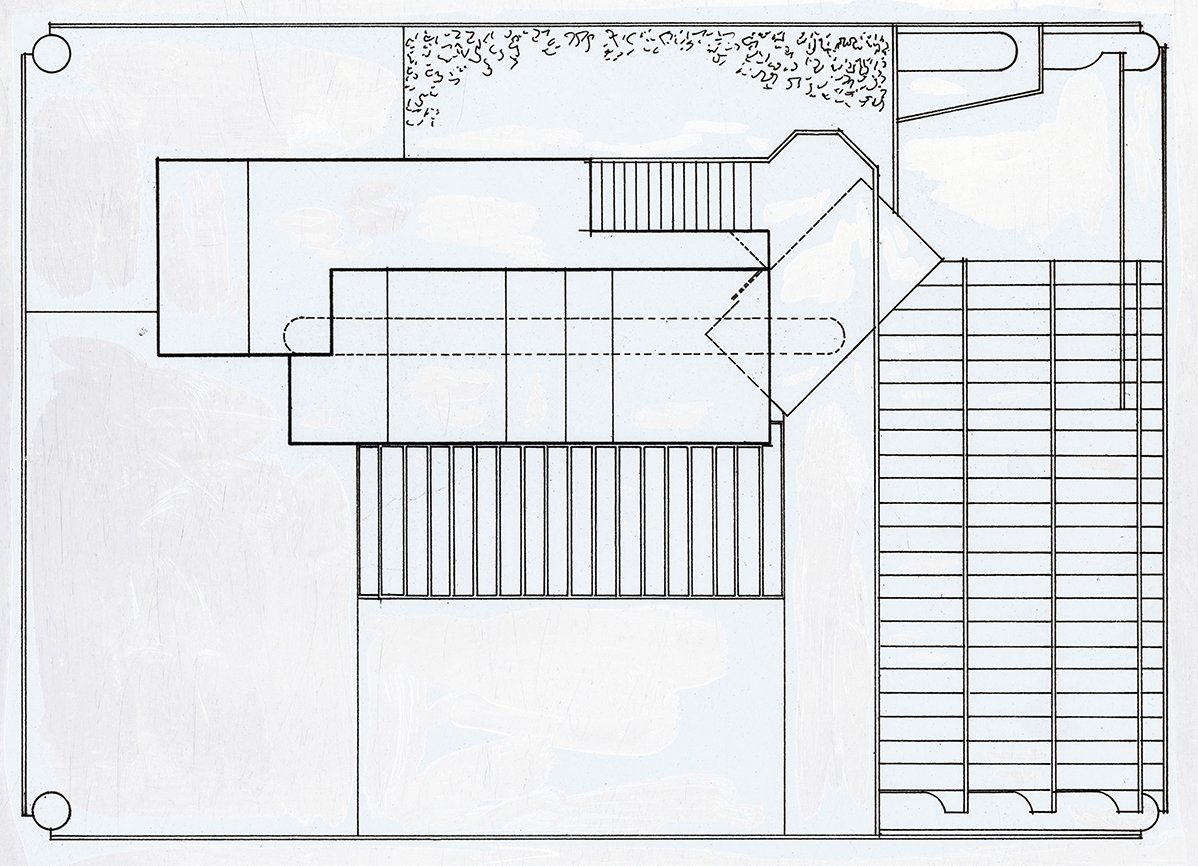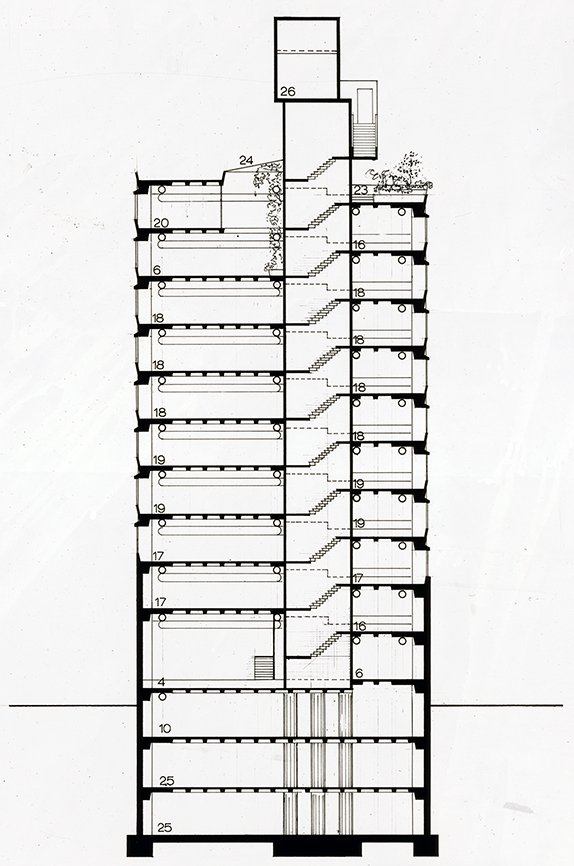Welcome to the Archives of The Paul Rudolph Institute for Modern Architecture. The purpose of this online collection is to function as a tool for scholars, students, architects, preservationists, journalists and other interested parties. The archive consists of photographs, slides, articles and publications from Rudolph’s lifetime; physical drawings and models; personal photos and memorabilia; and contemporary photographs and articles.
Some of the materials are in the public domain, some are offered under Creative Commons, and some are owned by others, including the Paul Rudolph Estate. Please speak with a representative of The Paul Rudolph Institute for Modern Architecture before using any drawings or photos in the Archives. In all cases, the researcher shall determine how to appropriately publish or otherwise distribute the materials found in this collection, while maintaining appropriate protection of the applicable intellectual property rights.
In his will, Paul Rudolph gave his Architectural Archives (including drawings, plans, renderings, blueprints, models and other materials prepared in connection with his professional practice of architecture) to the Library of Congress Trust Fund following his death in 1997. A Stipulation of Settlement, signed on June 6, 2001 between the Paul Rudolph Estate and the Library of Congress Trust Fund, resulted in the transfer of those items to the Library of Congress among the Architectural Archives, that the Library of Congress determined suitable for its collections. The intellectual property rights of items transferred to the Library of Congress are in the public domain. The usage of the Paul M. Rudolph Archive at the Library of Congress and any intellectual property rights are governed by the Library of Congress Rights and Permissions.
However, the Library of Congress has not received the entirety of the Paul Rudolph architectural works, and therefore ownership and intellectual property rights of any materials that were not selected by the Library of Congress may not be in the public domain and may belong to the Paul Rudolph Estate.
LOCATION
Address: 2-9-5 Sakae, Naka-ku
City: Nagoya
State: Aichi
Zip Code: 460-0008
Nation: Japan
STATUS
Type: Office
Status: Built
TECHNICAL DATA
Date(s): 1971
Site Area:
Floor Area: 54,000 ft² (5,0116.8 m²)
Height:
Floors (Above Ground): 14
Building Cost:
PROFESSIONAL TEAM
Client: Daiei House & Company, Ltd.
Architect: Paul Rudolph
Associate Architect: Tsukasa Yamashita & Yuji Noga
Landscape:
Structural:
MEP:
QS/PM:
SUPPLIERS
Contractor:
Subcontractor(s):
Daiei House Headquarters Building
“Paul Rudolph’s main influence was on the quality of the impressive internal spaces and in the detailing of the public areas where the specification was sumptuous. His personal sketches… showed his full involvement in the early evolution of the scheme as well as his technique of producing freehand drawings of the plans, sections and elevations to examine the project at this initial stage.”
DRAWINGS - Design Drawings / Renderings
DRAWINGS - Construction Drawings
DRAWINGS - Shop Drawings
PHOTOS - Project Model
PHOTOS - During Construction
PHOTOS - Completed Project
PHOTOS - Current Conditions
LINKS FOR MORE INFORMATION
RELATED DOWNLOADS
PROJECT BIBLIOGRAPHY
“Chronological List of Works by Paul Rudolph, 1946-1974.” Architecture and Urbanism, no. 49, Jan. 1975.
“Daiei Building, Nagoya.” Japan Architect, no. 49, Feb. 1974, pp. 73–82.
Paul Rudolph. Paul Rudolph: Dessins D’Architecture. Office du Livre, 1974.
“Recent Work of Paul Rudolph - Daiei House Building.” Architecture and Urbanism, no. 3, Dec. 1973, pp. 5–6.
Roberto De Alba. Paul Rudolph: The Late Work. Princeton Architectural Press, 2003.
Rudolph, Paul. “Spatial Considerations in the Daiei House Building.” Architecture and Urbanism, no. 3, Dec. 1973, pp. 7–22.
Tony Monk. The Art and Architecture of Paul Rudolph. John Wiley & Sons Ltd., 1999.
Yamashita, Tsukasa. “From Conception to Final Plan.” Architecture and Urbanism, no. 3, Dec. 1973, pp. 23–28.
---. “Its Position and Its Background.” Architecture and Urbanism, no. 3, Dec. 1973, p. 29.





































































































